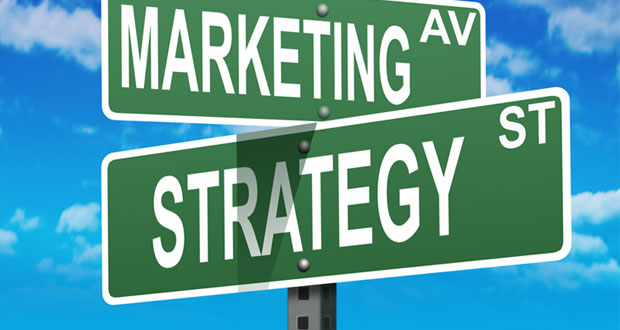Metrics matter. In business, they measure sales, they measure profits, and they measure brand health. Marketers measure their reputations, their ad recall, and their shares-of-market. They measure tweets and shares and all sorts of social networking outreach. Big Data was invented just to measure all the things marketers have come to measure.
With all the things marketers measure, they haven’t yet located the silver bullet, but really smart marketers will have caught the glint. They measure the consumers’ emotional engagement with their categories and brands.
The bottom line — yesterday, today, but particularly tomorrow — is that engagement with the brand is the ultimate brand objective. Or should be. Yes, to get there, brand marketers need and, in fact, do employ all kinds of outreach — more and more each day in an increasingly digital and connected world.
It’s nice, even important, to see high measures of engagement with the method the brand is using to get the consumer to engage with the brand. However, those metrics are of the moment — today. They don’t correlate highly with actual consumer emotions, desires, and behavior. They’re useful for measuring processes today but not for predicting consumer behavior tomorrow.
Why? There are, broadly speaking, four engagement methods used by all brands alone or in various combinations, but there is only one true brand objective. Methods of outreach by a brand can include the following:
- Platform (TV, online, mobile, print, sponsorship)
- Context (webpage, program venue, magazine, gaming)
- Message (advertising or communications)
- Experience (store, event, customer relationship management)
The singular objective? Emotional brand engagement. You want your brand engagement numbers to be as high as possible because those particular numbers are validated leading indicators of customer behavior and category transformation. They tell you what consumers are going to do, as opposed to what they’ve already done!
Engagement metrics also are emblematic of how consumers view a category, what they expect from a category, and how they’ll compare brands. Further, they determine how well brands are able to meet those expectations.
Brands that best meet consumers’ expectations always do best in the real marketplace. Measure them correctly, and they identify value shifts that accurately predict consumer tendencies, customer inclinations, consumer expectations, and sector shifts. Those metrics allow us to predict behavior in the marketplace.
Drill down across a broad enough spectrum of categories and brands, identify the configurations of those shifts, and you literally can see what consumers are going to do: their tendencies, inclinations, and movements. In short, it allows us to predict trends.
This year’s trend insights are based on more than 120,000 consumer psychological assessments measuring the direction and velocity of consumer and category values. This trend synthesis represents 102 categories and 986 brands. It takes into account B2C and B2B categories.
Following are 10 trends that will have direct consequences on the success — or failure — of your 2019 branding and marketing initiatives.
1. Real People, Real Profits
How consumers define “value” is already complex and is only going to get more complex. That’s Problem No. 1. Problem No. 2 is that only consumers will be able to tell you why they buy the way they do.
Any appearance of ubiquity will create trouble for brands seen to have no authentic meaning or emotional resonance with which to engage consumers. To the consumer, the question is not, “What are you?” but “Who are you?” Sure, the primacy of the product is critical, but customer satisfaction ultimately kicks in, and it usually kicks hard and fast.
The consumer “voice,” however, will be more important than ever! Marketers need to learn how to listen to the consumers’ unarticulated desires!
2. Brand Surrogacy Is Basic
Brands will increasingly need to become a surrogate for “value.” Remember the primacy of the product? These days that’s table stakes — the price of entry just to compete in the category.
The real brand will be based on what’s wrapped up emotionally in the brand and what consumers believe the brand means to them or can mean to them. It’s not just a matter of a brand saying it; it comes down to what the consumer is willing to believe.
In the increasing consumer- and digitally-driven marketplace, accomplishing that only will get harder. More of the same will not be enough. Brands will have to work a lot harder, too, to avoid reliance on low-lower-lowest pricing strategies to engage consumers.
3. Consumers Want More
Cross-category consumer expectations have increased 28 percent year-over-year. Brands generally keep up by only 7 percent, leaving a big gap between what’s desired and what’s delivered. Expectations will continue to increase because even though consumers buy on a category basis, they learn on a cross-category basis.
Consumers’ abilities to conduct smartphone outreach on a near-instantaneous basis, for example, surge across sector boundaries. The ability to measure real, unarticulated expectations accurately will become critical for brands.
4. Everything Will Get More Emotional
Differentiation will remain critical to brand success. Every marketer nods at that, but it’s just gotten harder to achieve it.
While true innovation will continue to show up on the rational side of the equation, differentiation will increasingly be dependent upon what the brand is able to offer consumers emotionally.
That means identifying real emotional values — not just producing more creative advertising and mobile videos.
5. The Need For Emotional Engagement Will Not Go Away
Engagement is the way consumers will do business with you. Period. It is the ultimate brand objective. Marketers will need to continue to use the right platforms, programs, messages, and experiences.
However, brand engagement will be the ultimate objective that will guarantee future growth, customer loyalty, and profitability. There’s a simple test: Ask yourself, “Do I know what consumers expect from their Ideal in the category?” and “Where and how does my brand accomplish that?”
If your answer has to do with price or lower fees, charges, or price tags, your brand is totally off the emotional engagement track it needs to be on.
6. Engagement and Entertainment Are Different
Entertainment provides amusement. It can be funny, or it can be poignant. It gets attention, but today attention doesn’t guarantee sales. If it did, every video ad would have a cat walking across a keyboard or links to movies!
Real engagement is not time spent. Real emotional engagement affects the emotional consumer-to-brand bond and the bottom line. It’s something that has consumers feeling that, based on what they just saw, the brand better meets the expectations they hold for their category Ideal.
A laugh, a tear, or a social share is really not an acceptable ROI. Sales and profits are. Marketers should make sure their ad agencies are aware of the difference. They used to say, “It isn’t creative unless it sells.” That’s truer than ever.
7. Augmented Reality Will Become Real
Marketers will use the interactive experience of the real-world environment. The line between reality and augmented reality gets thinner and thinner every year as technology gets better and better. This interaction will be enhanced by multiple sensory modalities, including visual, auditory, and olfactory. It’s only a matter of time before this technology becomes part of consumers’ everyday lives.
Retailers have been using augmented reality to show customers how furniture would look in different rooms of their homes or apartments or if the colors will match their motifs.
The AR hit of 2016, Pokmon Go, allowed users to “catch” their favorite Pokmon by looking through their phones at the real world — but with images superimposed. It attracted 65 million users.
L’Oreal’s app virtually shows users what they would look like with a certain shade of makeup color applied. The potential of augmented reality is endless, and it’s coming to your category soon.
8. Don’t Turn a Deaf Ear to Voice Search
More than half of all searches will be via smart, learning-capable artificial intelligence voice assistants like Siri, Alexa, and Google Assistant. The world of voice assistants has changed but watch for bigger changes down the road.
The best should recognize and answer your questions clearly, help you to complete tasks, and allow you to access services easily. A good voice assistant will provide correct and informative answers to questions.
As technology and reliability increase, voice assistants will be able to recognize and answer more specific and complex questions. They will be able to access more than general knowledge. It will become an asked-and-answered world.
That means consumers will get better responses to queries. The more consumers integrate AI into their world, the more they’ll expect marketers to follow or be left behind. Chief marketing officers will need to keep on top of search engine optimization.
9. Visuals Will Need to Enthrall
There was a time when people who wanted a visual experience had to visit a church. Now they take their smartphones out of their pockets.
Today’s consumers are more visually literate and technologically agile than ever before. Video will dominate social. Most marketers talk the talk about “storytelling,” and today — and tomorrow — visual content is at the center of storytelling.
This year, nearly 75 percent of all communications were visually based. That number is going to go up to 90 percent in the next three years. Major platforms and social networking apps will need to improve feed quality and add interactive features.
10. You Won’t Be Able to Take Your Eye Off the Brand
Increased consumer expectations will come with a greater sense of commoditization. You may be known, but you will need to be known for something meaningful and important to consumers. Otherwise, you disappear.
Think Sears or The Bon-Ton, Remington or Nine West. Or Gibson and Brookstone. They’ve all gone the bankruptcy route. It was not a failure of any of the 4P’s (product, price, place, promotion). It was a failure of the brand.
Brands are important to Baby Boomers and will be something you’ll need to worry about with Millennials. Gen Z will make up 30 percent of the U.S. population, so when you do real brand planning, you really need to keep them in mind.
When it comes to truly predictive measures and trends, it’s said there are three kinds of marketers: those who let it happen, those who make it happen, and those who wonder what happened.
A new year provides brand marketers with a chance for new resolutions and new beginnings. However, as the old saying goes, “If marketers want to do something new, they have to stop doing something old.”
These trends provide brands the opportunity to break habits and embrace new methods of engagement, as well as introduce new models, new technologies, and new — and profitable — opportunities in their brand and marketing planning.













































